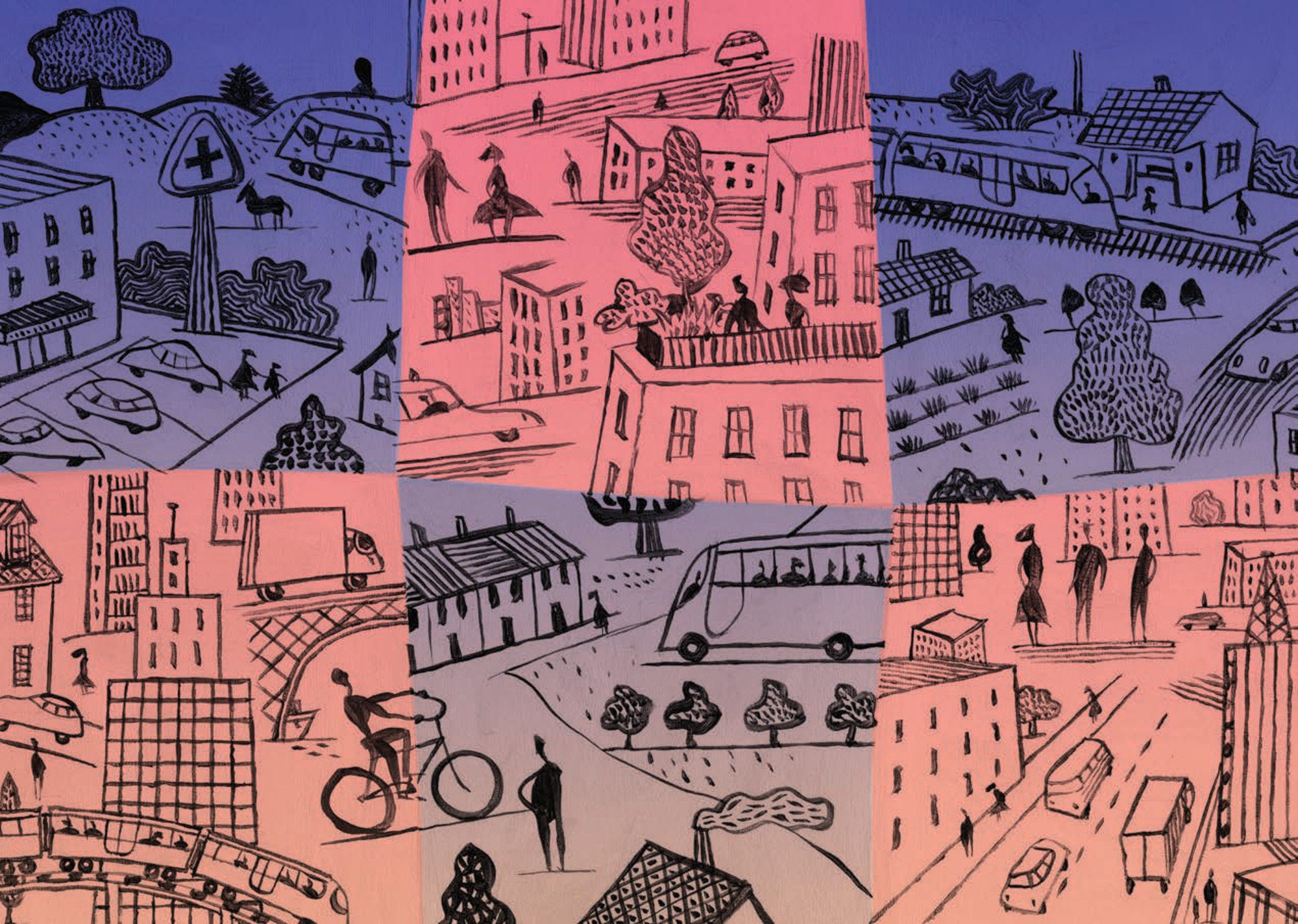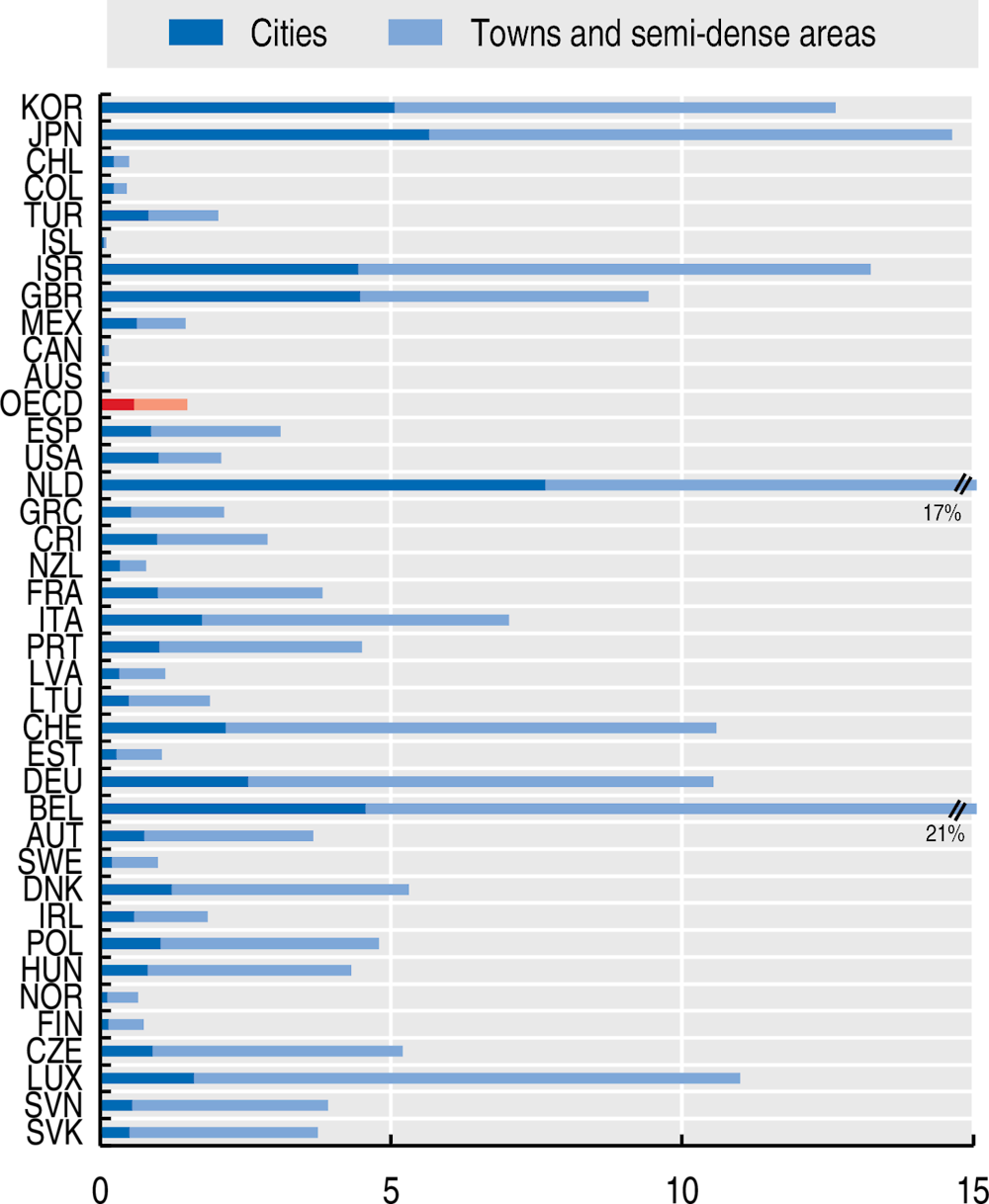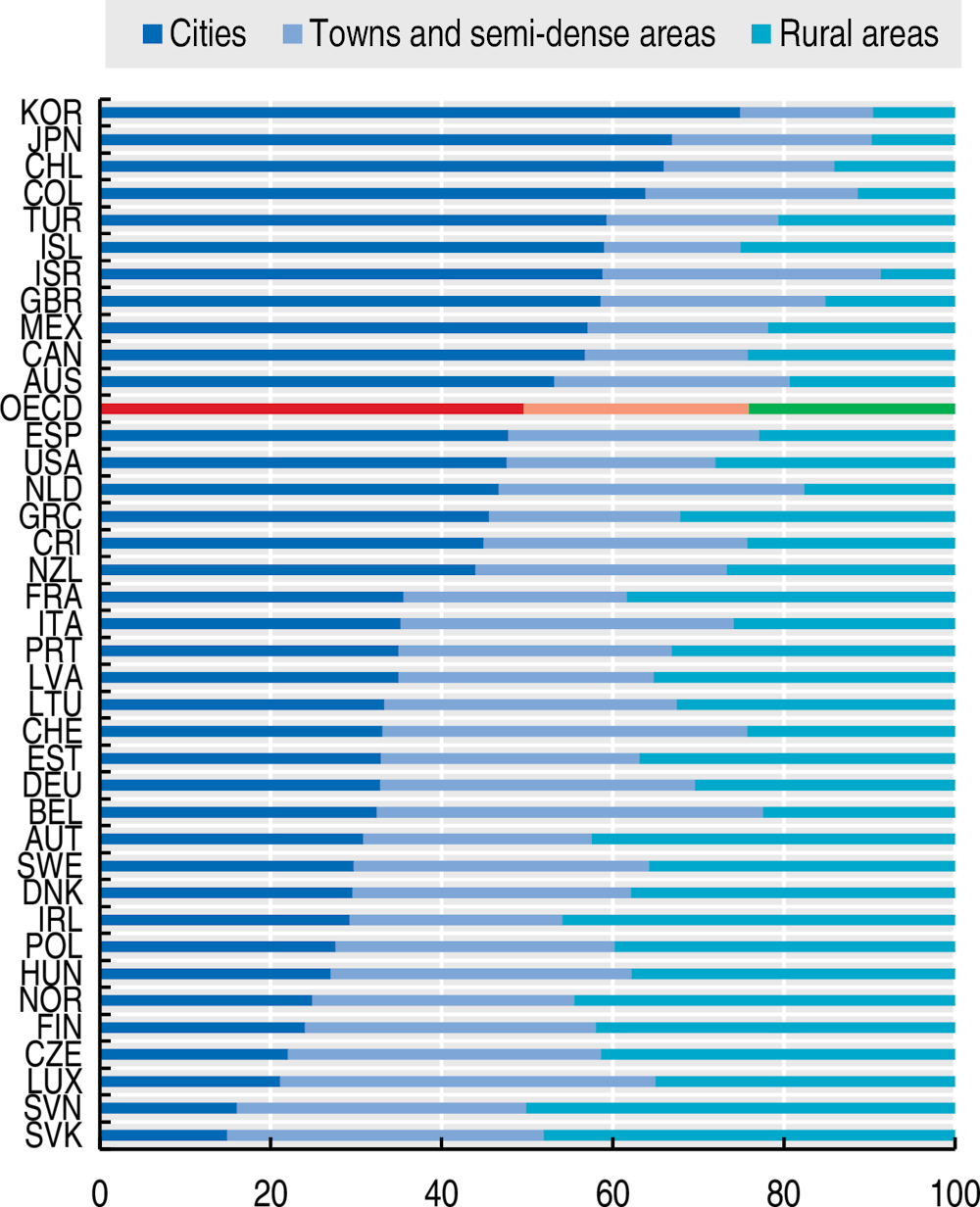Most OECD countries experienced an increase in the share of the population living in cities.
Over the last 50 years, the population in OECD countries has concentrated around large and densely populated regions. The concentration of the population within a country is shaped by many factors including the distribution of economic activities within the country and the presence of public services or amenities. In 2015, almost half of the population of OECD countries (49%) lived in cities, which represented only 6% of the total OECD surface area. Of the remaining population, 26% lived in towns and semi-dense areas and 24% in rural areas.
Across OECD countries, the distribution of population across different types of settlements is highly uneven. While more than 60% of the population lived in cities in Chile, Colombia, Japan and Korea, less than 20% of the population lived in such areas in the Slovak Republic and Slovenia (Figure 3.2). On average, rural areas accounted for around one‐quarter of the population and 98.5% of the land area in OECD countries. In countries such as Ireland, the Slovak Republic and Slovenia, one out of two people lived in rural regions which is double the OECD average (Figure 3.1).
Since 2000, the share of the population living in cities has increased by around 3 percentage points (pp) across the OECD, mainly at the expense of rural areas (Figure 3.3). During this period, the share of the population in towns and semi-dense areas and rural areas has decreased on average by 1.3 and 1.5 pp respectively. The relative growth of cities was particularly strong in Iceland, New Zealand and Türkiye, where their population share rose by over 7 pp.



